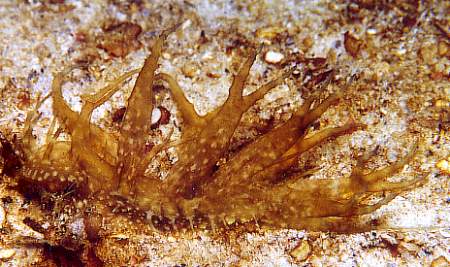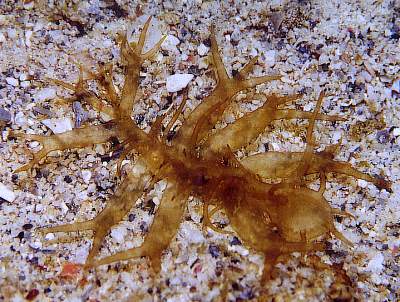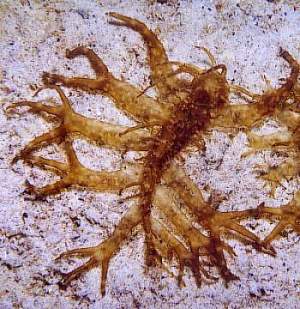Melibe megaceras from Malaysia
April 17, 2003
From: Harry Erhardt


Dear Bill,
I have just returned from the island of
Mantanani, a small island near Kota Kinabalu, Sabah, Malaysia. In 24m depth [19-24 March] I found a big population of hundreds of animals of a species of Melibe I have never seen in my life before and not in the Sea Slug Forum. They ranged in length from 30 mm to about 70 mm.
Here are some photos to show you that these animals exist. A friend of mine has a video of these creatures if you need more information on their feeding and moving actions. I think that this Melibe is now at a reproductive stage, because you only see so many animals coming together when they are forming breeding aggregations.
Gilly Elliott, who is dive master at Mantanani, and is very interested in nudibranchs could also give you further information.
Dr Harry Erhardt
Fritzlar
Germany
dr.harry.erhardt@web.de
Erhardt, H., 2003 (Apr 17) Melibe megaceras from Malaysia. [Message in] Sea Slug Forum. Australian Museum, Sydney. Available from http://www.seaslugforum.net/find/9655
Dear Harry,
Thanks for these wonderful photos of the Melibe. It is Melibe megaceras which has previously been recorded only from Hawaii. It isn't on the Forum because I didn't have any reasonable photos of it. I think it was photographed many years ago at Lizard Is, Great Barrier Reef, but will need to hunt through my old correspondence files to see if I can find the photos - a daunting task. I have prepared a Fact Sheet on the species, and split your photos into a few messages so we can display some of its anatomy in sufficient detail. The upper right photo shows a larger animal with whitish patches on the cerata and the sides of the foot.
Basically this is one of the strangest looking of a very strange-looking genus! I would suspect the very large cerata and the way they are held horizontally, are related to its zooxanthellae symbiosis whih I discuss on the Fact Sheet. To keep zooxanthellae alive and functioning, they have to have sunlight. By keeping the cerata flattened it allows the whole surface of each ceras to be in the sun, and also the upper surface of the body and the oral hood, both of which are also full of zooxanthellae.
Like all species of Melibe, this animal species has that unique feeding organ - or dishing net - the oral hood. It has papillae around the 'lip' of the hood which are used to sense small crustacea iin the sand. I have posted some close-up photos of the head region in a separate message.
Rudman, W.B., 2003 (Apr 17). Comment on Melibe megaceras from Malaysia by Harry Erhardt. [Message in] Sea Slug Forum. Australian Museum, Sydney. Available from http://www.seaslugforum.net/find/9655Related messages
-
Re: Melibe megaceras from Red Sea
From: Bill Rudman, March 15, 2005 -
Melibe megaceras from the Red Sea
From: Oren Lederman, March 12, 2005 -
Melibe megaceras from the Great Barrier Reef
From: Bill Rudman, May 6, 2003 -
Melibe megaceras - detail of the head
From: Bill Rudman, April 17, 2003 -
Melibe megaceras from Malaysia (2)
From: Harry Erhardt, April 17, 2003 -
Melibe megaceras - anatomical details
From: Bill Rudman, April 17, 2003
